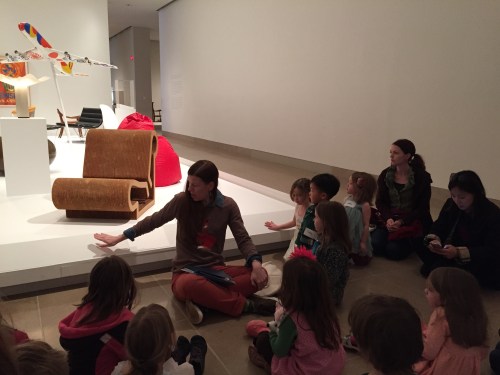Earlier this week, we had some very special guests visit the Museum! Drew Daywalt, author of the book The Day the Crayons Quit and The Day the Crayons Came Home, will be coming to the Museum on May 22 for some family fun as part of the Arts & Letters Live BooksmART lecture series. We were able to snap some behind-the-scenes pics as Orange Crayon and Purple Crayon scouted out the galleries, and we even caught a glimpse of some of their top secret correspondence. If you haven’t already, get your tickets to see Drew in person and hear more about these crazy crayons and their colorful adventures!

Artworks shown:
- Maurice de Vlaminck, Bougival, c. 1905, Dallas Museum of Art, The Wendy and Emery Reves Collection.
- Martha E. Keech, Baltimor, Maryland, “Album” quilt, c. 1861, Dallas Museum of Art, anonymous centennial gift.
- Claude Monet, Water Lilies, 1908, Dallas Museum of Art, gift of the Meadows Foundation, Incorporated.
- Egungun costume, Republic of Benin: Yoruba peoples, Late 20th century, Dallas Museum of Art, gift of Pace Primitive Gallery, New York.
- Buddha, Thailand: La-na, 15th century, Dallas Museum of Art, gift of David T. Owsley via the Alvin and Lucy Owsley Foundation.
- Oli Sihvonen, Matrix – Red, Gray II, 1967, Dallas Museum of Art, Dallas Art Association Purchase, © Oli Sihvonen / Licensed by VAGA, New York, NY.
Leah Hanson
Manager of Family and Early Learning Programs
Madeleine Fitzgerald
Audience Relations Coordinator






































































